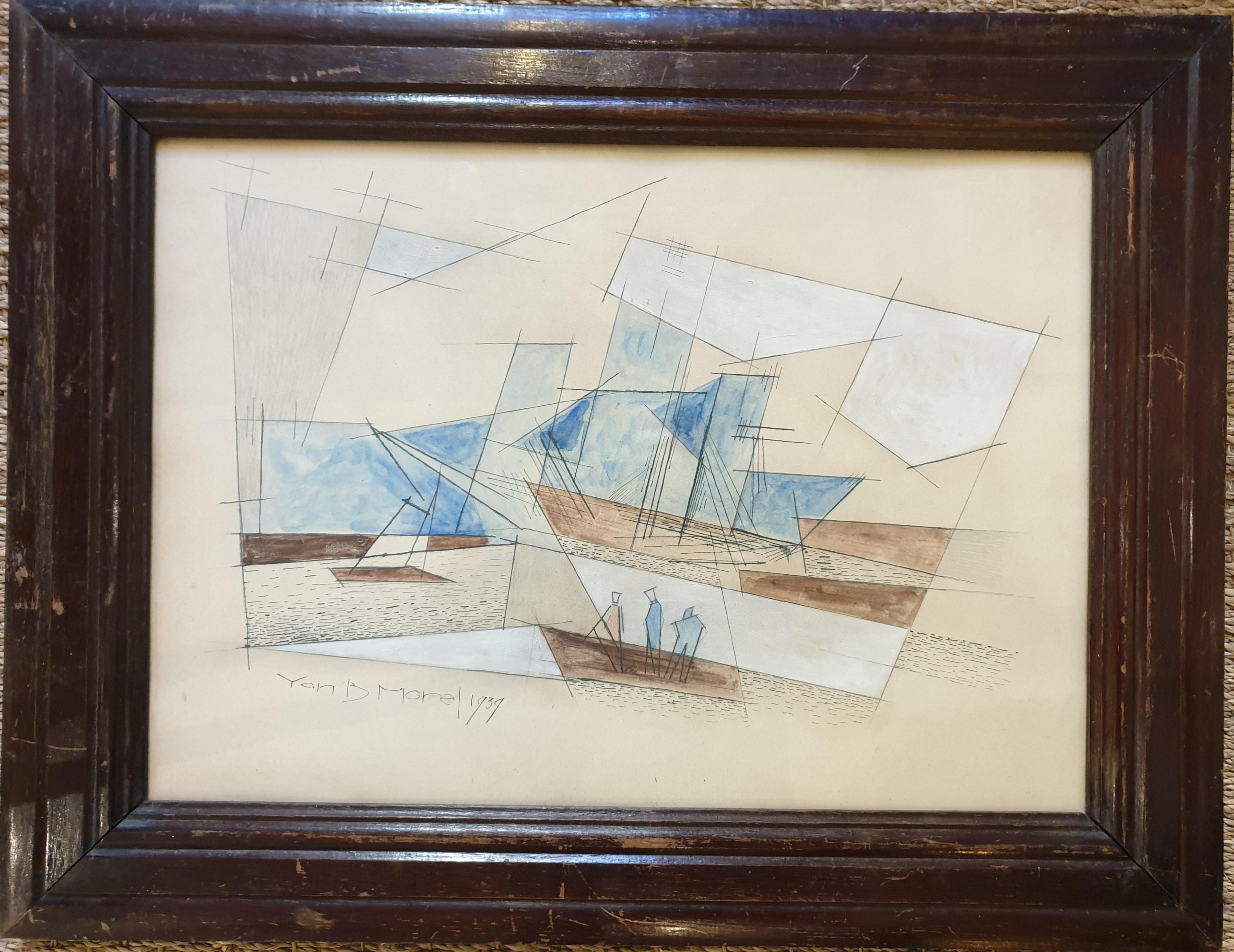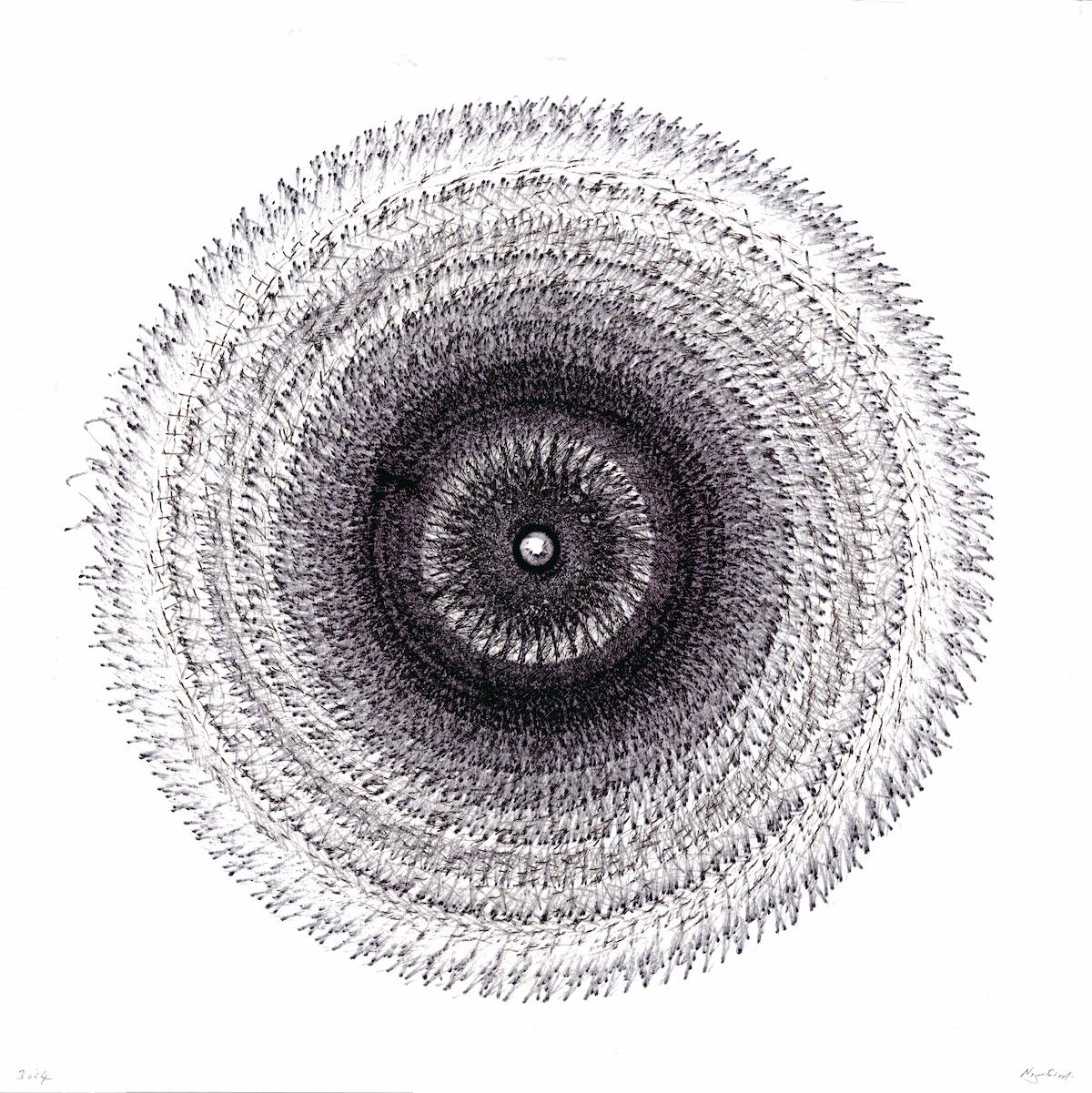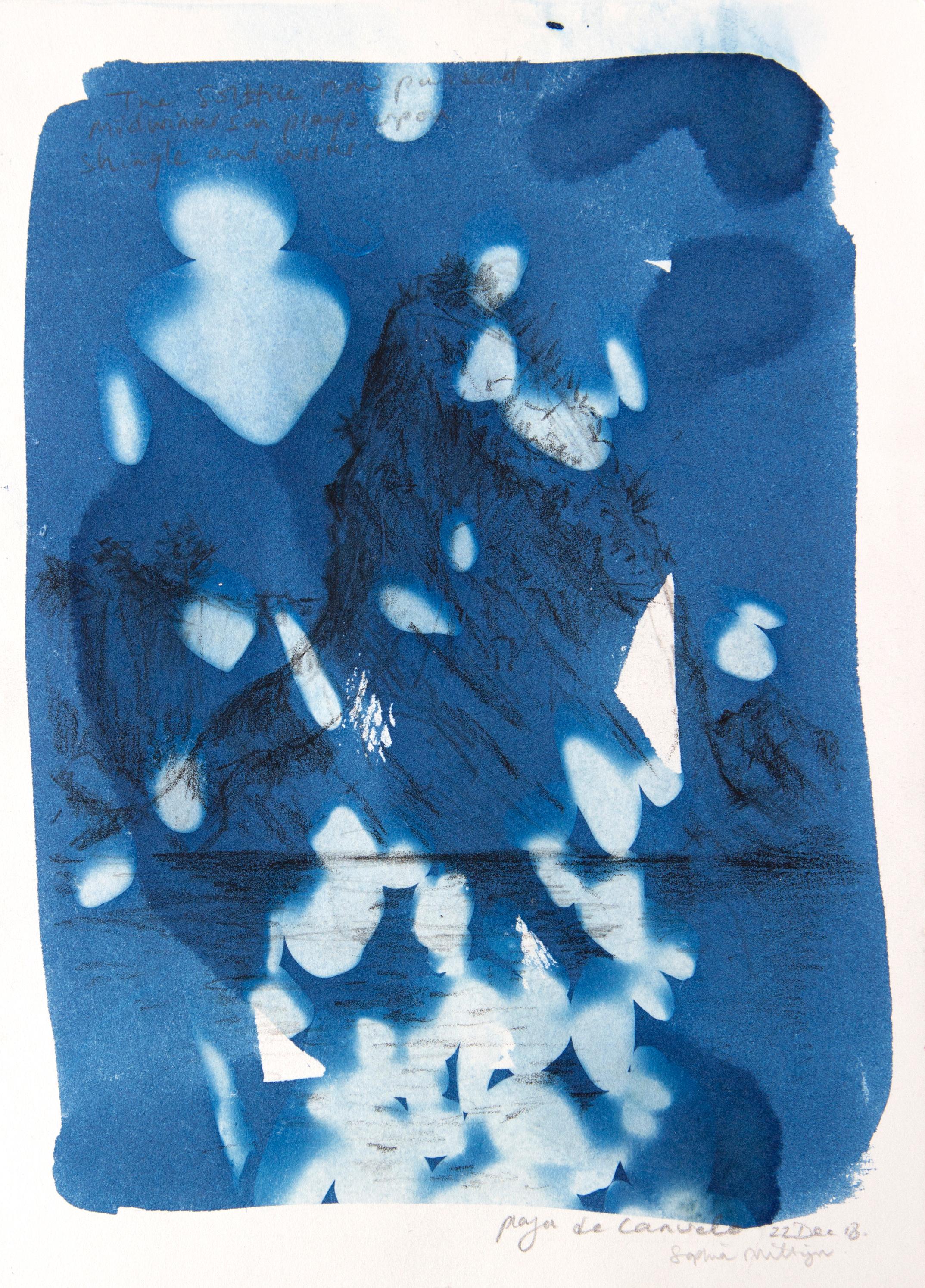Clifford EllisClifford Ellis Broad Chalk Wiltshire sketch Modern British Art New Naturalistsc. 1950
c. 1950
About the Item
- Creator:Clifford Ellis (1907 - 1985, British)
- Creation Year:c. 1950
- Dimensions:Height: 7.88 in (20 cm)Width: 13 in (33 cm)
- Medium:
- Movement & Style:
- Period:
- Condition:Generally very good.
- Gallery Location:London, GB
- Reference Number:1stDibs: LU79535859332
Clifford Ellis
Clifford Ellis was born in Bognor in Sussex and trained at Saint Martin’s School of Art and Regent Street Polytechnic. He was a graphic artist and illustrator who is best known for the posters he produced for London Transport during the 1930s. Ellis generally collaborated on posters with his wife, Rosemary, whom he married in 1931. The General Post Office, Shell and the Empire Marketing Board were also clients for the couple's posters. They signed their posters C&RE, their initials being in alphabetical order, and they are readily recognizable by their ebullient use of color and form.
Employed during the war as a camoufleur, along with so many other artists, Ellis was also an official war artist, serving with the Grenadier Guards. Rosemary, meanwhile, was an artist for the Recording Britain project. Following the war, they trained art teachers at the Bath Academy of Art. They also designed a series of nearly 100 book jackets for the New Naturalist series, published by Collins between 1945–82, and were always fascinated by animals and natural history.
- ShippingRetrieving quote...Ships From: London, United Kingdom
- Return PolicyA return for this item may be initiated within 14 days of delivery.
- Clifford Ellis, 'Sketch for Sailing Boats I' drawing Modern British ArtBy Clifford EllisLocated in London, GBTo see our other Modern British Art, scroll down to "More from this Seller" and below it click on "See all from this Seller" - or send us a message if you cannot find the artist you ...Category
Mid-20th Century Abstract Landscape Drawings and Watercolors
MaterialsPencil
- Horace Mann Livens Hanover Square London gouache painting 1920 EdwardianBy Horace Mann LivensLocated in London, GBTo view our other Modern British Art and our views of London scroll down to 'view all from this seller' and search. Horace Mann Livens (1862-1936) Hanover Square London (1920) Gouac...Category
1920s Impressionist Landscape Drawings and Watercolors
MaterialsGouache
- Kenneth Rowntree: 'Abstract Australian Landscape' watercolour Modern British ArtBy Kenneth RowntreeLocated in London, GBKenneth Rowntree Abstract Australian Landscape Watercolour 27.5 x 33cm Signed (top left) and dated ‘Kenneth Rowntree ’85’ Provenance: Anderson & Garland Studio sale of Kenneth Rowntree lot 263 Tuesday 8 September 2009 For biographical details and other works by Rowntree click here. Rowntree visited Australia in 1984/85. In this painting he picks up various vignettes from the Australian landscape in six separate blocks. Two relate to the sky, with almost-unbroken blue skies stretching from horizon to horizon, three relate to desert areas, with a whole array of different textures, and one is a luscious green. In one of the desert scenes he has picked out two road signs, in typical Rowntree fashion, reducing them to their simplest form. In her essay Kenneth Rowntree: A Strange Simplicity (published in Kenneth Rowntree A Centenary Exhibition Published by Moore-Gwyn Fine Art and Liss Llewellyn Fine Art, on behalf of the artist’s estate, on the occasion of the centenary of Kenneth Rowntree’s birth) Alexandra Harris makes reference to this painting noting: "Later, in 1986, just when the young David Hockney was collaging the signs and road-markings of Route 138 in Pearblossom Highway, Rowntree was in Australia painting yellow diamond-shaped road-signs as bright icons in open country. Wherever he went, Rowntree captured both the unfamiliarity of places and their relationship to things he knew. Heading into the Australian outback, he painted a road-sign as he would paint a rail signal at Clare in Suffolk or nautical markers at Swansea." Hockney’s 1986 Pearblossom Highway may be seen in the Getty and it is worth noting that Rowntree was in fact painting the yellow sign in 1985, so a year before Hockney. Kenneth Rowntree (1915-1997) Rowntree was born in Scarborough and educated in York where his father managed the local department store. Young Kenneth’s work was displayed there and his first major commission arose from an advertisement at the store. After the Ruskin School of Drawing in Oxford he studied at the Slade School, meeting Eric Ravilious and Edward Bawden and then moving to north Essex to work with them as members of the group of Great Bardfield Artists. Between 1940 and 1943 he was one of the team of over 60 artists engaged by the War Artists Advisory Committee for the ‘Recording Britain’ project, to record the face of England and Wales before wartime action – or development – changed it for ever. Rowntree’s keen sense of design, and fascination with the quirky and the vernacular made him an ideal candidate to interpret our built heritage’s more unusual aspects. In 1951 he painted murals in the Lion and Unicorn pavilion for the Festival of Britain, he decorated the route of the Queen’s Coronation procession (some of the works being acquired by Her Majesty). During a teaching job at the Ruskin School of Drawing in Oxford he was driven, perhaps by his experiences recording Britain, to record the decorated barges that belonged to the Oxford Colleges. These wooden Victorian ceremonial barges had belonged to the London livery companies, but were acquired in their later life by the Colleges to be used as changing rooms and clubhouses for the College boat clubs – depending on the size of the barge rowing eights were stored on board too. Part way through painting one of them Rowntree thought his drawing incorrect until he realised that it was the boat that was moving. It was in fact sinking. These days the Colleges have modern (but unromantic) boat houses; a handful of the barges remain – restored – in private hands. In 1959 he was appointed Professor of Fine Art at King’s College, Newcastle (latterly part of the University), which as British art schools went was one of the most progressive. The Master of Painting was the abstract constructionist Victor Passmore...Category
Late 20th Century Abstract Abstract Drawings and Watercolors
MaterialsWatercolor
- Oliver Hall RA Boat House Windermere Lake District Drawing Modern British ArtBy Oliver Hall, R.A., R.E., R.S.W.Located in London, GBTo see our other Modern British Art, scroll down to "More from this Seller" and below it click on "See all from this Seller" - or send us a message if you cannot find the artist you want. Oliver Hall...Category
20th Century Realist Landscape Drawings and Watercolors
MaterialsCarbon Pencil
- Design for the Midland Hotel, Manchester Architectural Drawing Railway HotelLocated in London, GBTo see our other Architectural Drawings, scroll down to "More from this Seller" and below it click on "See all from this Seller" and then search. A Design For The Midland Hotel Manc...Category
Late 19th Century Realist Landscape Drawings and Watercolors
MaterialsCarbon Pencil
- Clifford & Rosemary Ellis Snake Watercolour Ben Nicholson Frame New NaturalistsBy Clifford & Rosemary EllisLocated in London, GBWe acquired a series of paintings from Clifford and Rosemary Ellis's studio. To find more scroll down to "More from this Seller" and below it click on "See all from this seller." C...Category
Mid-20th Century Realist Abstract Drawings and Watercolors
MaterialsCarbon Pencil
- Late Art Deco Period Cubist Nautical Harbour SceneLocated in Cotignac, FRLate Art Deco Period, Cubist watercolour of a nautical harbour scene painted by Yan Bernard Morel (dit Yan Bernard Dyl ) in 1939. Yan B. Morel, born on June 18th 1887, was a French painter, landscape designer, decorator, illustrator and film maker. Morel was a friend of Robert Delauney...Category
1930s Cubist Abstract Drawings and Watercolors
MaterialsPaper, Watercolor, Carbon Pencil
- Flock 7By Nigel BirdLocated in Deddington, GBOriginal abstract painting depicting the sounds of a bird flock. Nigel Bird has wonderful artworks for sale online and in our art gallery. Nigel Bird Studied Fine Art (Sculpture and ...Category
21st Century and Contemporary Abstract Abstract Drawings and Watercolors
MaterialsPaper, Carbon Pencil
- 'Guijarros y Agua'. Spanish seascape painting, drawingBy Sophia MilliganLocated in Penzance, GBSOPHIA MILLIGAN 'Guijarros y Agua' Original Artwork (unframed*) ______________ Winter solstice light dancing on shingles and lapping tidal movements, towering rock formations rise ...Category
2010s Contemporary Landscape Drawings and Watercolors
MaterialsPaper, Conté, Mixed Media, Pencil, Carbon Pencil, Color Pencil
- Raft Landscape in Sweden / - Temporary structures -Located in Berlin, DEOtto Eglau (1917 Berlin - 1988 Kampen), Raft Landscape in Sweden, 1956. Watercolor and ink on paper, 45 x 60 cm, signed in his own hand lower right with "Eglau" and dated "[19]56". - somewhat darkened Exposé as PDF - Temporary structures - About the artwork A wide river landscape stretches out before us, its horizon line running across the upper part of the picture, creating the impression of enormous depth. The depth is further extended by the dark tree trunks, most of which spill into the picture, and at the same time rhythmized by their different positions. This sequence of movements gives the landscape a strong dynamic moment. Indeed, the landscape seems to be "fleeing" from beneath us. To keep the gaze on the foreground alone requires a real visual effort. By looking at the foreground, we have already arrived at the background. Therefore, we cannot speak of pictorial grounds in the classical sense. Rather, we are confronted with a structurally rhythmic continuum of space, the dynamics of which are further accelerated by the cut tree trunks in the foreground and the upright trunks in the background, which function as target marks. Since the narrow strip of sky has the same white tonality as the ice, this area also fits seamlessly into the spatial structure, so that a deserted "structural landscape" unfolds before us. The structure, however, is not - as in the case of Piet Mondrian - completely abstract and thus something that exists independently of itself, removed from the time of natural space. The structures that Otto Eglau discovered in nature remain bound to it, which is why they exhibit a temporality that corresponds to the 'course of things'. Even if they correspond to an architecture of nature brought to representation, the structures are not substantial, but contingent. Artistically uncovered, they present themselves to Eglau at the very moment he captures them. In nature itself, these structures will never be repeated in the same way. Panta rhei - everything flows, even if the flow of time is frozen by his artistic representation and the image, for all its dynamism, radiates calm at the same time. "The structures I put behind things, and the lines that hold my paintings, are signs of transient life. They are random like the trace a wave leaves in the sand, blurred like the border between sea and land, ephemeral like the life of a shell I hold in my hand." - Otto Eglau About the artist After his release from captivity in 1947, Otto Eglau studied at the Hochschule für Bildende Künste in Berlin. He was a student of Oskar Nerlinger, Max Kaus and Wolf Hoffmann. From 1953 he taught free drawing for architects at the Technical University of Berlin. In the years that followed, Eglau undertook numerous study trips that took him to Scandinavia, the Arab world, the Far East and even Macau. During these travels he cultivated the technique of watercolour, which allowed him to work quickly in the open air, while retaining a strong painterly quality. Scholarships enabled Eglau to stay in Japan from 1962 to 1963 and in Naples in 1970. From 1969 to 1976 Eglau was professor of etching at the International Summer Academy of Fine Arts in Salzburg. Between 1983 and 1988 Eglau worked simultaneously in his Berlin studio at Lietzensee, which had its own printing press, and in his studio in Kampen on the island of Sylt. Otto Eglau's work has been shown in more than 100 solo exhibitions worldwide and in more than 120 group exhibitions. "I love the vastness of the island. The mudflats off Kampen are my treasure trove; here I discover new shapes and colors every day. Without Sylt, I would be like a fish without water." - Otto Eglau Selected Bibliography Hanns Theodor Flemming: Otto Eglau. Das graphische Werk, Flensburg 1966. Heinrich Seemann (Einführung): Otto Eglau. Inselskizzen, Hamburg 1982. Heinrich Seemann (Einführung): Otto Eglau. Japan, Nepal, Sylt. Aquarelle. Zeichen und Strukturen. Einführung von Heinrich Seemann, Hamburg 1986. Otto Eglau: Watt-Tagebuch. Ausgewählte Aquarelle aus den Skizzenbüchern Otto Eglaus. Kampen 1996. GERMAN VERSION Otto Eglau (1917 Berlin – 1988 Kampen), Floßlandschaft in Schweden, 1956. Aquarell und Tusche auf Papier, 45 x 60 cm, unten rechts eigenhändig in Blei mit „Eglau“ signiert und mit „[19]56“ datiert. - etwas nachgedunkelt Exposé als PDF - Temporäre Strukturen - zum Werk Vor uns erstreckt sich eine weite Flusslandschaft, deren Horizontline im oberen Bereich des Bildes verläuft, wodurch der Eindruck einer enormen Tiefenerstreckung entsteht. Die Tiefe wird von den dunklen, zumeist ins Bild hineinfluchtenden Baumstämmen zusätzlich geweitet und – durch ihre verschiedenartigen Lagen – dabei zugleich rhythmisiert. Durch diese Bewegungsabfolge weist die Landschaft ein starkes dynamisches Moment auf. Und tatsächlich stellt sich der Eindruck ein, als ob die Landschaft unter uns ‚hinwegfluchten‘ würde. Den Blick einzig im Vordergrund zu halten, verlangt regelrecht eine visuelle Anstrengung. Auf den Vordergrund schauend sind wir bereits im Hintergrund angelangt. Daher kann gar nicht von Bildgründen im klassischen Sinne gesprochen werden. Vielmehr steht hier ein strukturell rhythmisiertes Raumkontinuum vor Augen, dessen Dynamik von den angeschnittenen Baumstämmen vorne und den als Zielmarken fungierenden aufgerichteten Stämmen hinten zusätzlich beschleunigt wird. Da der schmale Himmelstreifen dieselbe Weißtonalität wie die Wasserlandschaft aufweist, fügt sich auch dieser Bereich bruchlos in das Raumgefüge ein, so dass sich vor uns eine menschenleere ‚Strukturlandschaft‘ ausbreitet. Die Struktur ist aber nicht – wie dies bei Piet Mondrian der Fall ist – gänzlich abstrakt und dadurch etwas eigenständig für sich Bestehendes, das der Zeit des Naturraums enthoben ist. Die von Otto Eglau in der Natur entdecken Strukturen bleiben an diese zurückgebunden, weshalb sie eine dem ‚Lauf der Dinge‘ entsprechende Temporalität aufweisen. Auch wenn sie einer zur Darstellung gebrachten Architektur der Natur entsprechen, sind die Strukturen nichts Substanzielles, sondern kontingent. Künstlerisch aufgedeckt, bieten sie sich Eglau in eben jenem Moment dar, den er festhält. In der Natur selbst werden diese Strukturen niemals in derselben Art wiederkehren. Panta rhei – alles fließt, auch wenn sich der Fluss der Zeit durch seine künstlerische Darstellung verfestigt hat, wodurch das Bild – trotz aller Dynamik – zugleich auch Ruhe ausstrahlt. „Die Strukturen, die ich hinter die Dinge setze, und die Linien, die meine Bilder halten, sind Zeichen des vergänglichen Lebens. Sie sind zufällig wie die Spur, die eine Welle im Sand hinterlässt, unscharf wie die Grenze zwischen Meer und Land, vergänglich wie das Leben einer Muschel, die ich in der Hand halte.“ - Otto Eglau zum Künstler Nach seiner Entlassung aus der Kriegsgefangenschaft 1947 nahm Otto Eglau ein Studium an der Hochschule für Bildende Künste in Berlin auf. Dort war wer Schüler von Oskar Nerlinger, Max Kaus und Wolf Hoffmann. Ab 1953 unterrichtete er freies Zeichnen für Architekten an der Technischen Universität Berlin. In den Folgejahren unternahm Eglau zahlreiche Studienreisen, die ihn nach Skandinavien, in den arabischen Raum, nach Fernost und bis nach Macau führten. Auf diesen Fahrten kultivierte er die Technik des Aquarellierens, die eine zügige Bildschöpfung im Freiraum erlaubt und dennoch eine stark malerische Qualität aufweist. Stipendien ermöglichten es Eglau, sich von 1962 bis 1963 in Japan aufzuhalten und 1970 länger in Neapel zu verweilen. Von 1969 bis 1976 hatte Eglau die Professur für Radierung an der Internationalen Sommerakademie für Bildende Kunst in Salzburg inne. Zwischen 1983 und 1988 war Eglau parallel in seinem Berliner Atelier am...Category
1950s Realist Landscape Drawings and Watercolors
MaterialsWatercolor
- Galveston House Architectural Landscape ViewBy Herb RatherLocated in Houston, TXRealistic watercolor painting of a house in Galveston, Texas. The work is signed by the artist in the bottom corner. It is framed in a black frame with a white matte. Dimensions with...Category
21st Century and Contemporary Realist Landscape Drawings and Watercolors
MaterialsWatercolor
- Swallows by the water. 1976, paper, pencil, 45. 5 x 40. 5 cmLocated in Riga, LVSwallows by the water. 1976, paper, pencil, 45. 5 x 40. 5 cm Dzidra Ezergaile (1926-2013) Born in Riga. School years alternate with summer work in the countryside. In 1947, she bega...Category
1970s Modern Abstract Drawings and Watercolors
MaterialsPaper, Pencil




